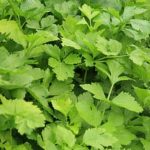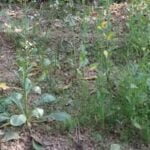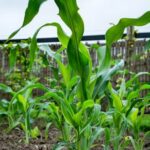Are you interested in starting a vegetable garden on the Big Island of Hawaii? Big Island vegetable gardeners face unique challenges and opportunities due to the island’s climate and terrain.
From the history of vegetable gardening on the island to success stories and community resources, this article will provide valuable information for both beginner and experienced gardeners. Whether you’re a local resident or just visiting, this guide will help you make the most of your vegetable garden on the Big Island.
The rich volcanic soil and diverse microclimates make the Big Island an ideal location for growing a wide variety of vegetables. The island’s agricultural history and traditions have also shaped the way vegetables are grown and harvested on its fertile land. In this section, we will explore how vegetable gardening has become an integral part of life on the Big Island, from traditional Hawaiian practices to modern sustainable methods.
Starting a vegetable garden on the Big Island may seem daunting at first, but with the right knowledge and tools, it can be a rewarding experience. This section will provide valuable tips for aspiring vegetable gardeners, including recommended vegetables for the island’s climate, essential tools and resources, and best practices for getting started. Whether you have limited space or acres of land, there are solutions tailored to suit your specific needs as a big island vegetable gardener.
The History of Vegetable Gardening on Big Island
When European settlers arrived in the 18th century, they introduced new vegetables to the island, further enriching the local agricultural landscape. Over time, vegetable gardening on Big Island evolved in response to changes in climate, technology, and cultural influences. Today, it continues to be an integral part of the island’s food supply and economy.
One key aspect of the history of vegetable gardening on Big Island is its resilience in the face of natural disasters. The island has faced various challenges such as volcanic eruptions and hurricanes, yet gardeners have persevered and adapted their practices to overcome these obstacles. This resilience is a testament to the dedication and ingenuity of Big Island vegetable gardeners throughout history.
| Key Aspect | Details |
|---|---|
| Native Hawaiian Agriculture | Utilized terrace farming and irrigation systems for growing sweet potatoes, taro, and breadfruit. |
| European Influence | Introduced new vegetables to the island’s agricultural practices. |
| Resilience | Gardeners have persevered through natural disasters like volcanic eruptions and hurricanes. |
Ideal Vegetables for Big Island Climate
Big Island, Hawaii is known for its unique climate, featuring a combination of tropical and subtropical conditions that make it an ideal location for vegetable gardening. The moderate temperatures and ample rainfall provide a perfect environment for growing a wide variety of vegetables, making it a paradise for big island vegetable gardeners.
Recommended Vegetables
Some of the ideal vegetables for the Big Island climate include tomatoes, lettuce, bell peppers, cucumbers, zucchini, and kale. These vegetables thrive in the warm temperatures and moist soil, allowing gardeners to enjoy a bountiful harvest throughout the year. Additionally, root crops such as sweet potatoes and carrots also do well in the rich volcanic soil of the Big Island.
Exotic Varieties
In addition to traditional garden vegetables, Big Island vegetable gardeners have the opportunity to experiment with exotic varieties that are well-suited to the unique climate. Tropical fruits like pineapple and papaya can be grown alongside traditional vegetables, adding a touch of exotic flair to any garden.
Adapting to Microclimates
While the overall climate on the Big Island is favorable for vegetable gardening, it’s important for gardeners to consider microclimates when choosing what to plant. Coastal areas may have different growing conditions than higher elevations or volcano-influenced regions. By selecting vegetables that are suited to these microclimates, big island vegetable gardeners can optimize their chances of success.
As aspiring or experienced vegetable gardeners on the Big Island seek out which plants will flourish in their gardens – whether due to climate or specific garden features – they can find success by selecting varieties that will thrive in these conditions. With this selection comes vitality and health from locally-grown foods – something any gardener or home-cook can appreciate.
Tips for Starting a Vegetable Garden on Big Island
Starting a vegetable garden on Big Island can be an exciting and rewarding experience. With the right knowledge and resources, you can cultivate a thriving garden that produces an abundance of fresh, nutritious produce. Whether you are a beginner or an experienced gardener, there are several tips to keep in mind when starting a vegetable garden on Big Island.
Consider Your Location
The first step in starting a vegetable garden on Big Island is to consider your location. Different areas of the island have varying microclimates, which can significantly impact the success of your garden. It’s essential to research the specific climate in your area and choose vegetables that are well-suited to those conditions. Additionally, consider factors such as sunlight exposure, soil quality, and proximity to water sources when selecting a location for your garden.
Prepare Your Soil
Quality soil is crucial for the health and productivity of your vegetable garden. Before planting, take the time to prepare your soil by enriching it with organic matter, such as compost or manure. This will help provide essential nutrients for your plants and improve overall soil structure. Consider conducting a soil test to determine any deficiencies and make necessary adjustments before planting.
Start Small and Expand Over Time
When starting a vegetable garden on Big Island, it’s wise to start small and gradually expand over time. Beginning with a manageable plot allows you to focus on proper care and maintenance while gaining valuable experience. As you become more comfortable with gardening in this particular climate, you can expand your garden to accommodate additional crops.
By following these tips for starting a vegetable garden on Big Island, you can set yourself up for success and enjoy the bountiful harvests that come from growing your own fresh produce in this unique environment. With dedication and patience, big island vegetable gardeners can create thriving gardens that contribute to their self-sufficiency and wellbeing while also benefiting the local community through sharing their knowledge and surplus harvests.
Challenges and Solutions for Vegetable Gardeners on Big Island
Vegetable gardening on Big Island comes with its own set of challenges, but with the right solutions, gardeners can overcome these obstacles and enjoy a bountiful harvest. Some of the common challenges faced by big island vegetable gardeners include soil quality, pests, and extreme weather conditions. Here are some solutions to help address these challenges:
- Soil Quality: The volcanic soil on Big Island can be nutrient-rich but also may lack certain essential nutrients for vegetable growth. To improve soil quality, gardeners can add organic matter such as compost or mulch to provide the necessary nutrients for plant growth.
- Pests: Insect pests such as aphids, mites, and caterpillars can damage vegetable crops. Utilizing natural pest control methods such as introducing beneficial insects like ladybugs or using neem oil can help keep pest populations in check.
- Extreme Weather Conditions: Big Island’s climate can bring strong winds and occasional heavy rains, which may damage delicate plants. Creating wind barriers with fencing or planting wind-resistant vegetables such as kale and collard greens can help protect plants from these weather conditions.
In addition to these challenges, managing water usage in drier areas of the island is also important for vegetable gardening success. Installing drip irrigation systems or utilizing water-conserving techniques like mulching can help ensure that crops receive adequate moisture while being mindful of water conservation efforts.
Big Island vegetable gardeners have found success in implementing these solutions to overcome the unique challenges of gardening in this area. By adapting their gardening practices to the local climate and environment, they are able to cultivate thriving vegetable gardens and enjoy a variety of fresh produce all year round.
Ultimately, with perseverance and the right strategies in place, big island vegetable gardeners are able to create flourishing gardens despite the potential difficulties they may encounter along the way.
Success Stories From Big Island Vegetable Gardeners
Big Island vegetable gardeners have experienced great success in growing a variety of crops in the unique climate of the island. One such success story is that of the Smith family, who transformed their backyard into a thriving vegetable garden. Through hard work and dedication, they were able to grow an abundance of tomatoes, peppers, and zucchinis, which not only provided fresh produce for their family but also allowed them to share their harvest with neighbors.
Another inspiring success story comes from the Wong family, who started a community garden in their neighborhood. By working together with other residents, they were able to turn an unused plot of land into a productive garden that now supplies fresh vegetables to local families and food banks. This initiative not only brought the community together but also helped address food insecurity on the island.
The success stories of these and many other Big Island vegetable gardeners serve as a source of inspiration and motivation for others looking to start their own gardens. These stories highlight the potential for individuals and communities to make a positive impact through sustainable gardening practices.
| Success Story | Key Takeaway |
|---|---|
| The Smith Family | Transformed backyard into thriving garden |
| The Wong Family | Started community garden to address food insecurity |
Community Resources and Support for Big Island Vegetable Gardeners
Big Island vegetable gardeners are fortunate to have access to a variety of community resources and support to help them succeed in their gardening endeavors. Whether you are a beginner or an experienced gardener, there are plenty of opportunities to learn, connect with other growers, and access valuable resources to enhance your gardening experience.
Here are some of the community resources and support available for Big Island vegetable gardeners:
- Big Island Farmer’s Markets: These markets are not only great places to buy fresh produce, but also serve as valuable networking opportunities for vegetable gardeners. You can connect with local farmers and fellow gardeners, exchange tips and ideas, and even source heirloom seeds or unique plant varieties.
- Community Gardens: Many neighborhoods on the Big Island have community gardens where residents can rent out plots of land to cultivate their own vegetables. These gardens often provide a sense of camaraderie among gardeners, as well as access to shared tools, composting facilities, and water sources.
- Extension Services: The University of Hawaii Cooperative Extension Service offers a wealth of free or low-cost educational materials, workshops, and classes tailored specifically to Big Island growing conditions. They also provide soil testing services and personalized gardening advice.
- Gardening Clubs and Associations: Joining a local gardening club or association can offer numerous benefits such as guest speakers, plant swaps, group buys on supplies, and organized garden tours. These groups also offer a sense of belonging within the gardening community.
In addition to these resources, Big Island vegetable gardeners can take advantage of online forums and social media platforms dedicated to gardening in Hawaii. These virtual communities provide an invaluable space for sharing knowledge, troubleshooting problems, and celebrating successes with like-minded individuals from all over the island. With so many resources at their disposal, Big Island vegetable gardeners can continue to thrive in their passion for growing food sustainably and organically.
Guided Tours and Workshops for Big Island Vegetable Gardeners
In conclusion, Big Island vegetable gardeners have a rich history and a thriving community of support to help them succeed in their gardening endeavors. With the ideal climate for growing a wide variety of vegetables, there are countless opportunities for gardeners to explore and learn from the experiences of others. From workshops to guided tours, there are endless resources available to help both beginner and experienced gardeners develop their skills and knowledge.
The challenges that come with vegetable gardening on the Big Island are not to be overlooked, but with proper planning and the support of the community, solutions can be found. By sharing success stories and learning from each other’s experiences, Big Island vegetable gardeners can continue to thrive and contribute to the vibrant agricultural landscape of the island.
Community resources play a crucial role in supporting Big Island vegetable gardeners, providing access to education, tools, and networking opportunities. By taking advantage of these resources, gardeners can continue to grow their skills, build connections with like-minded individuals, and contribute to building a sustainable food system on the Big Island. The future looks bright for Big Island vegetable gardeners as they continue to learn, grow, and share their passion for gardening with others.
Frequently Asked Questions
What Vegetables Grow on the Big Island?
On the Big Island of Hawaii, you can find a variety of vegetables growing, including taro, sweet potatoes, lettuce, tomatoes, bell peppers, and green beans. The island’s diverse climate and fertile soil support the growth of these vegetables.
What Garden Vegetables Grow Well in Hawaii?
Many garden vegetables thrive in Hawaii’s warm and tropical climate. Examples include eggplant, cucumber, squash, kale, spinach, and various herbs like basil and cilantro. The key is to choose plants that can withstand the year-round warmth and regular rainfall.
Can You Grow a Garden Year-Round in Hawaii?
Yes, it is possible to grow a garden year-round in Hawaii due to its consistent temperature and ample sunlight. With proper planning and care, you can continuously cultivate a variety of crops without the limitations imposed by colder climates. This makes gardening in Hawaii quite rewarding for those who enjoy it.

If you’re looking to get into vegetable gardening, or are just looking for some tips on how to make your current garden better, then you’ve come to the right place! My name is Ethel and I have been gardening for years. In this blog, I’m going to share with you some of my best tips on how to create a successful vegetable garden.





